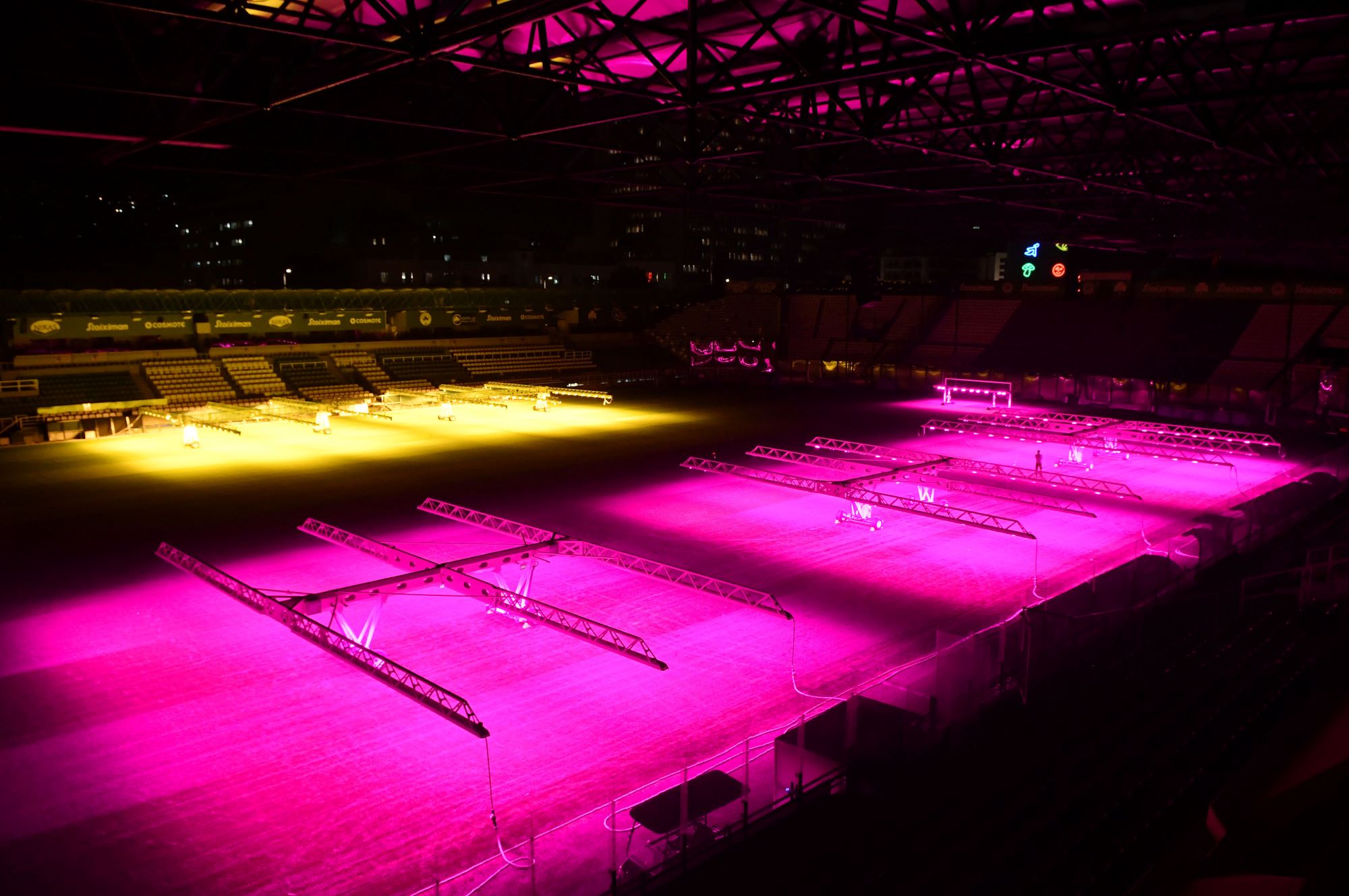State-of-the-art LED grow lighting system
at Kansas City Current
‘The Current’ is a young and ambitious soccer club, dedicated to women’s soccer. It is expected that the state-of-the-art CPKC stadium, which is now under construction, will be ready for use in 2024. The investment in sustainable LED technology to maintain the grass playing surface fits perfectly within the innovative and sustainable character of the facility.

The first in North America, KC Current raises the bar
For years, High-Pressure Sodium (HPS) technology was predominantly used to provide light and warmth to the grass plant for the recovery of the playing field. However, an increasing number of sports facilities are now opting for the ‘new’ energy-efficient variant: LED grow lighting technology. With three LED440 and two LED120 grass grow lighting units, Kansas City Current is the first sports facility in North America to adopt this innovative technology. The KC Current are leading the way in turf maintenance technology in the U.S. and other clubs are following.
“LED lights are significantly more energy-efficient than traditional sources of light,” added Scott Jenkins, KC Current Vice President of Facility Development. “Grow lights have been around for some time, but not with this new LED technology. We are committed to be leaders in how we operate the stadium, and this is just one of many investments we are making to raise the bar in our industry. We are thrilled to be the first in North America to use this new technology to enhance growing conditions.”
Providing a high-quality and safe playing surface
An artificial grow lighting system is essential for stadiums with grass fields. The grow lights help the grass stay healthy throughout the year, even during periods of shorter daylight and cold weather. The grow lights will be an important part of field maintenance throughout the year.
“If you look at grass in predominantly shaded areas, you’ll notice it isn’t very dense and the grass plant is naturally longer,” said head groundskeeper Jackson Kramer. “That’s because the plant is reaching for the sunlight it’s lacking. If you give it enough light for photosynthesis, it doesn’t need to reach as much, so we get a denser, healthier plant. With the canopy over our stadium, it creates shadows over the field and in certain areas, the grass doesn’t get as much sun as it needs. These grow lights provide that supplemental light so the grass can be at its healthiest.”
The field manager controls the microclimate
These lights also allow for maximal customization of the field treatment. While more traditional grow lighting systems emit both light and heat from the bulbs, LED lights put out very little heat.
“One of the most innovative parts of the system is that we can turn on the lighting independently of the heat,” said Kramer. “During the summer, we don’t need the heat, so we just turn on the lights. And when it gets cold in the fall through spring, we can turn on the heat as well. This innovation makes the total unit far more energy efficient than past iterations, hence the sustainability aspect.”
Data driven decision making
Part of implementing the new lights was a focus on the data that will ensure the groundskeeping staff can maximize the effectiveness of the lights based on sunlight, weather and more. Using SGL’s TurfPods, the club can collect data on soil moisture, temperature and salinity in the rootzone and canopy temperature, humidity and light at the surface.
“We started this process with an analysis of the stadium design and built a ‘Transmission Analysis’ that shows how light will move across the pitch each month of the year,” explains Matt Williams, Technical Sales Engineer at SGL. “Our agronomy department, in conjunction with the KC Current groundskeeping staff, uses this analysis to determine where and for what duration to use the lights.”
Data makes us better at our job because we can offer a better surface for our athletes if the grass gets what it needs.
“The data we get from the systems can tell us a lot about the conditions of the grass and the local atmospheric conditions,” said Kramer. “More data for us means we have to know how to parse through it all and take the necessary steps to address it. It makes us better at our job because we can offer a better surface for our athletes if the grass gets what it needs.”
“Our grounds crew is all-in when it comes to taking care of the pitch,” said Jenkins. “The more tools we have, the more work we have to do. But it also fuels a hunger and pride because this is a once in a lifetime project. We greatly appreciate the investment being made by our ownership to being the best women’s football club in the world.”
Pink instead of traditional yellow
“The pink colour the units radiate is the result of the composition of the light spectrum utilized by our LED grass grow lights,” said Williams. “This light spectrum focuses on the wavelengths of light that are most efficient at conducting photosynthesis in the plant (red and blue). This is the most efficient from an electrical and photosynthetic perspective.”
The fans will have to wait a little bit longer before they can cheer their beloved KC Current to victory in the new stadium. One thing is certain, the field won’t be the issue.
Customer stories
Read more customer stories.









